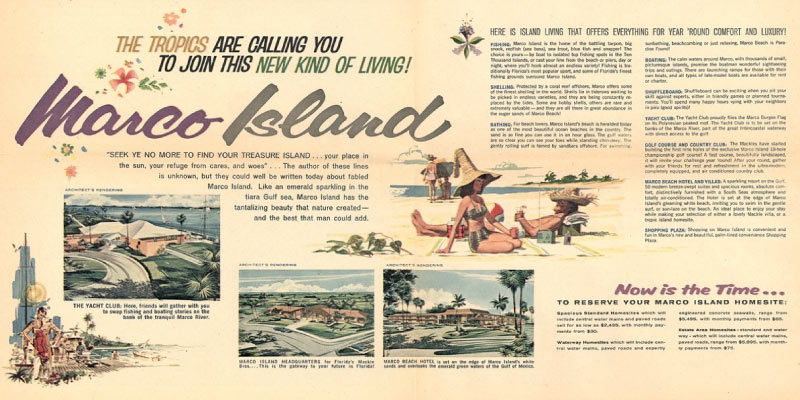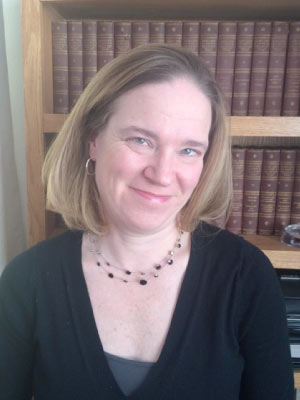
“What is this place?” Anna Andrzejewski asked herself. Surrounded by palm trees, bright colors, sprawling suburbia, and the occasional alligator, she couldn’t make sense of the strange cultural landscape of South Florida when she visited nearly 20 years ago. It was nothing like what she had experienced growing up in the Midwest, and as a complete outsider, it intrigued her to understand how modern Florida came to be — and why it looked so different from the rest of the United States.
Coming from her background in art history, architecture, and culture, Andrzejewski has spent the past five years writing a book that analyzes the uniqueness of the South Floridian leisure landscape, particularly its large, sprawling vacation and retirement communities. The upcoming book blends Florida’s culture, history, and environment into an explanation of why Florida is the way it is, a fitting task for the former Center for Culture, History, and the Environment (CHE) director.

“My interest in South Florida’s vacation and retirement communities developed quite by accident,” she said, “and it’s a story I love to tell.”
While working on a historical project about a post-World War II builder in Madison, Andrzejewski learned of a family of builders with roots in South Florida’s modern development. She hoped to draw comparisons between the families and reached out to one of the descendants of the Florida family, finding a phone number off Google and cold calling. The descendant, a son of the Florida development team, was more than willing to help Andrzejewski, inviting her to his home and showing her an extensive collection of records on his family.
“That’s good advice for graduate students,” Andrzejewski interjected. “Never be afraid to track down a lead.”
The information she gathered from her visit, coupled with her curiosity about the reasoning behind the building of vacation and retirement communities, sparked an idea for a book and, in 2018, Andrzejewski got to work. The book began as an analysis of South Floridia’s residential architecture, but as she continued to research, realized it was “more than just a story about buildings,” and focused on the additional aspects that contributed to Florida’s landscape of leisure, including builders, real estate developers, banks, mortgage institutions, and state and local governments.
Andrzejewski’s time as CHE’s director also contributed to the direction that her book ended up taking; she cites the center’s support as a key factor in how she completed the book so quickly. “Directing a research center and writing a book within five years is pretty extraordinary. It usually takes longer than that, believe it or not,” Andrzejewski said. “So, having the support of my Nelson Institute colleagues certainly helped nurture the book along.” Moreover, she wrote a chapter about “suburban nature,” that focused on the ways design of leisure communities shifted with growing consensus about environmentalism in the 1960s and 1970s.

Another area of support came from Andrzejewski’s fellowships at the Institute for Research in the Humanities (IRH), which she completed during the fall 2022 semester, and the National Endowment for the Humanities (NEH), which she completed during the spring 2023 semester. The IRH fellowship is a UW–Madison residential fellowship offered to in-house professors that allowed Andrzejewski to take a break from teaching. “It allowed me to remain in Madison and participate in events at the Institute and at Nelson, but also gave me the opportunity to focus on writing my book,” Andrzejewski said.
The NEH fellowship is a residential fellowship offered through the Hagley Center for History, Business, Technology, and Culture in Wilmington, Delaware (affiliated with the University of Delaware where Andrzejewski earned her PhD), in which Andrzejewski used the center’s collection of travel ephemera to help write her book. “They have the best collection of Florida travel ephemera, and I got to go there and spend hours in the archives combing through Florida advertising,” Andrzejewski said. “They selected me, I think, because they knew that I could use that collection extensively.”
The two fellowships ultimately allowed Andrzejewski the opportunity to finish the manuscript of her book, set to be published within the next year. She hopes that readers of her book will take the opportunity to think about South Florida’s leisure landscape in a more serious light. “It’s often billed as ticky-tacky, filled with monotonous landscapes of suburbia,” Andrzejewski said. “Certainly, it’s a playground of sorts, at least historically for middle class, white Americans, but it’s also something that tells a deeper story about not just travel and leisure in America, but also the way that we sort and separate ourselves.”